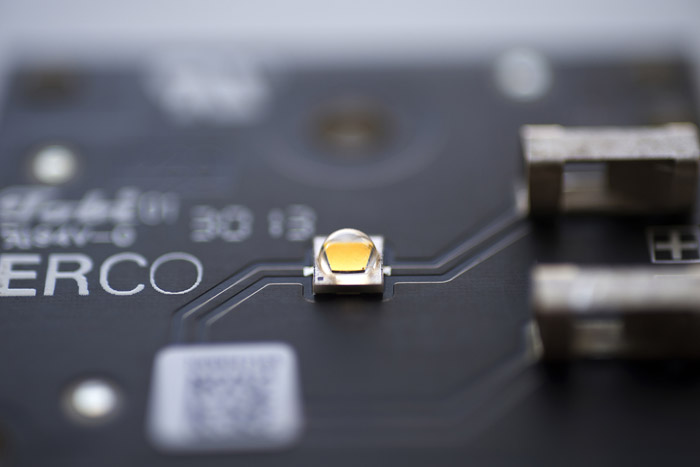
Architectural lighting / luminaire maker Erco, one of the oldest companies in the business and brand of choice for museums and galleries around the world, has gone 100 per cent LED.
As of this year, all Erco’s products – nearly 5,000 of them – will be based on LED light sources. Anyone showing up wanting HID or T5 will be disappointed.
The company says the move comes ‘after eight years of focused development work’. It started developing its first LED luminaire in 1999, and in 2006 made the prescient decision to concentrate its R&D work on the new technology.
Erco’s current CEO Tim Henrik Maack is the grandson-in-law of Arnold Reininghaus, who started the company in 1934 in Lüdenscheid, Germany, where it still has its headquarters.
In its new all-LED incarnation, the venerable manufacturer joins hundreds of younger outfits that jumped straight into the LED world, including Cree, Lumenpulse and all those dozens of companies with ‘LED’ in their names.
It may not be the first ‘traditional’ manufacturer to ditch conventional sources (the UK’s Collingwood is one example of that transition) but with 81 years of history, €135 million ($165 million) of annual sales, and a long-standing reputation as one of the highest quality brands in the business, it is the first company of its size and status to set the old technology completely aside.
While the big lighting players may focus exclusively on LED in their promotional materials and exhibition displays, many (especially those who make lamps) remain heavily invested in traditional technologies, and are still wresting budgets away from time-honoured cash cows like halogen, metal halide and fluorescent. Philips and Osram, for instance, still make two thirds of their money from non-LED products.
Erco’s managing director for innovation and marketing, Kay Pawlik, said the transition to LED had required the company to ‘reconsider lighting in every possible aspect’.
‘We have now reached a level at which we are able to deliver digital lighting tools that are highly energy-efficient without compromising on the light quality and output,’ said Pawlik.
Betting on a nascent technology like LED back in 2006 was a daunting prospect – although perhaps less so for a brand like Erco at the expensive end of the market, than it would have been for others. As Pawlik puts it, ‘Erco’s policy has always been to invest in a maximum of quality.’
Is he surprised his competitors haven’t yet done the same thing and ditched the old technologies completely? Pawlik brushes the question off – you don’t make decisions like this by ‘looking at your competitors’, he says, you do it by focusing on the needs of the architects and engineers who specify your products.
True enough, but it’s hard to imagine there haven’t been some tense moments in Erco board meetings as it navigated the transition to LED and forsook potential revenues from traditional technology.
Most importantly, though, Pawlik is convinced Erco’s customers are on board with the transition. There is still, he says, ‘a lot of prejudice against the quality of LED light, especially regarding colour temperature. But a lot of people change their mind when they see Erco light with their own eyes’.
As a result the transition to digital lighting has opened up brand new segments for Erco: ‘We have won important sales potential for instance in lighting for offices and retail,’ says Pawlik, ‘so now we can reach much more people.’
But hasn’t something been lost in setting aside time-honoured technologies in favour of LED? ‘No,’ says Pawlik. ‘Not at all. Actually it is quite the opposite: we have won a lot of new possibilities in product design. Working with LEDs and optoelectronics means an impact on form and appearance of the luminaires that is revolutionary. If you look at traditional analogue luminaires, you can usually guess what kind of technology is inside. Due to working with LEDs and projection through innovative optics and lenses, we produce luminaires with reduced dimensions or minimal design – even for luminaires with up to 12,000 lumens.‘We are convinced that the future is all about digital light. In the upcoming years, the evolution of the technology will certainly continue.’
